I often get excruciating migraines as a result of exposures to chemicals and excess EMFs (electro-magnetic frequencies). Aside from avoiding those triggers, what can I do naturally to help when that happens? I don’t take Rx or OTC meds and sometimes an ice pack will help immensely, but I would love to have more tools up my sleeve. Thank you!
Susun’s response:
“Oh, how densely packed your head is, my sweet,” sighs Grandmother Growth. “I’m afraid there’s no room for new growth. If you could empty your mind, leave off worrying and planning for a while, and give in to the chaos and its random pleasures, just for a short time, I think you’d feel less pressure and your head would hurt less. The energy of your womb now circulates inside you and throbs in your head. Sit quietly; breathe out through the top of your head and imagine the breath falling gently down to earth. Rest your forehead against the earth. Place this cool stone on your third eye. Your Crone’s Crowning comes closer. This is the work of your body; let your mind rest.”
To follow the wisdom of the Wise Woman Way tradition:
Step 0. Do nothing . . .
- Follow your natural instinct: Lie in total silence, in complete darkness, and sleep, if possible, until the headache is gone.
- Like fatigue, a headache, especially a migraine, is a way to get some time alone. Is finding time for yourself usually a headache?
Step 1. Collect information . . .
- Menopause often brings relief to the woman who has had migraine headaches since adolescence. Other women experience headaches for the first time during menopause, usually the result of fatigue, stress, rapidly changing hormone levels racing through the liver, and rushes of kundalini moving into the crown area.
- Menopausal headaches may also be triggered by sudden (and usually short-lived) allergies to certain foods.
- Headaches and migraines are a common side effect of ERT/HRT.
Step 2. Engage the energy . . .
- Rub a drop of lavender or chamomile oil briskly between your hands. When palms are warm and tingly, place them on the part of your head that aches. (It’s also wonderful to have someone do this for you.)
- If it’s tolerable for someone to hold your head, try this: Sit in a chair or lie down. Lean your head back into your friend’s hands and allow them to support your head in their palms (fingers pointing down, thumbs above the ears) for up to five minutes. Breathe fully.
- Blinking red lights can relieve extreme or severe migraines, within an hour, 72 percent of the time. Wear goggles that restrict side vision for maximum effect.
- Women with chronic migraines often benefit greatly from the help of a skilled feminist therapist.
Step 3. Nourish and tonify . . .
- Tea, infusion, or tincture of garden sage leaves offers immediate relief from a headache and helps prevent future ones.
- Black cohosh root tincture or a vinegar of fresh willow leaves will ease a headache with pain-killing methyl salicylate. Ten drops of the tincture or one teaspoon/15 ml of the vinegar is equivalent to two aspirin.
- Vervain (Verbena officinalis) was a sacred herb in the ancient matriarchies. Menopausal women use the tincture of fresh vervain flowers, 20-40 drops in water, before bed and as needed, to strengthen the nerves, relieve insomnia, dispel depression, treat nervous exhaustion, and moderate headaches, including migraines. (Vervain was a favored plant for the Maiden’s altar and the moon lodge, where she was used to promote the onset of the menstrual flow, ease cramps, reduce flooding, and quicken desire.)
- Lady’s mantle, another ancient sacred plant, has many magical attri-butes, including an ability to aid women who are taking on or leaving the role of mother. What a wonderful friend for an emerging crone! Try 10-25 drops of the tincture of the fresh herb several times a day to relieve headaches.
- The beautiful spring primrose (Primula veris) offers relief from meno-pausal headaches if taken regularly. The golden carpet of Schlesselblume on Bavarian pastures and roadsides is one of my favorite memories of Germany. If you don’t visit or live in Bavaria, you can grow and gather the blossoms of Primula officinalis instead; they’re also a good source of pain-killing salicyn. Make a tea of the dried flowers and drink several cups a day for some months. CAUTION: Sip your first cup mindfully and slowly, as some folks are allergic to primrose. NOTE: The roots of most primroses contain oil-soluble estrogenic factors and cell-softening saponins, suggesting use as an ointment for tender, dry vaginal tissue.
- Connections between foods and headaches are sketchy. There is little evidence that plants indigenous to the Americas, such as chocolate and nightshades (tomatoes, potatoes, eggplant, peppers, tobacco) contribute to headaches. I do suspect that chemicals in processed foods (such as aspartame, MSG, and nitrates) and in some natural ones (aged cheeses, miso, red wine) can trigger headaches. With other foods, you’re the best judge.
Step 4. Stimulate/Sedate . . .
• Avoid alcohol. It is a known headache trigger.
• Keep cool. Being hot, from hot baths, saunas, hot flashs, exertion, or air temperature, is the second most common headache trigger. Stay cool. Stay in the shade. And just say “no” to hot tubs.
• Sedate headache pain with tinctures of skullcap, 3-5 drops, and St. Joan’s wort, 25-30 drops. I take them together, as frequently as needed, up to half a dozen times a day. Migraine sufferers take them as soon as the aura begins, before there is pain, and repeat every ten minutes for 3-6 doses.
• Anti-inflammatory, hormone-rich wild yam eases the aching heads of menopausal women. A dose of wild yam root tincture is 10-30 drops up to 6 times a day, or infused, 1-2 teacupsful a day. The lower dose, taken daily, relieves chronic headaches. In acute situations, use the higher dose.
- Soak your feet in cool water scented with a few drops of rosemary oil. Breathe deeply.
- Migraines are most frequent between 6 a.m. and noon. Take head-ache remedies before bed and on awakening to insure maximum effect.
- To banish simple headaches, soak a handful of fresh lemon balm (Melissa) leaves in a glass of wine for an hour, or drink a tea of dried leaves. If you want sleep as part of your headache cure, substitute catnip (Nepeta cataria) for the melissa.
- Feverfew (Chrysanthemum parthenium) is a much publicized remedy for migraine. It is most effective as a preventative measure: eat a sprig of the fresh plant daily. For acute headache, 2-4 fresh leaves or a cup of strong tea may help. CAUTION: May irritate mouth.
Step 5b. Use drugs . . .
- Painkillers are many women’s first thought for a headache remedy. But habitual use increases the duration and frequency of headaches.
- Taking ERT/HRT? Ease off and see if your headaches ease up.
Step 6. Break and enter . . .
- Some women say their headaches are so bad that they want to blow their brains out. Perhaps menopausal headaches, like sleeplessness, are part of the physical “mind-altering” process of becoming a crone.
photos: Wise Woman Spiral ©iStockphoto.com / Chuck Spidell | Mother Goddess ©2001 Suzanne Cheryl Gardner

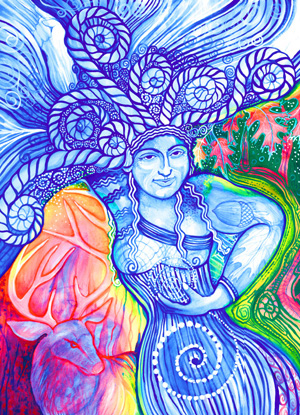

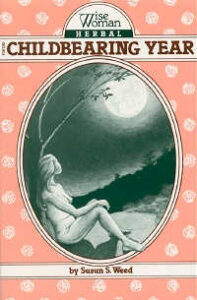
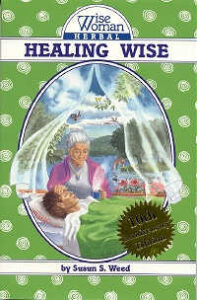

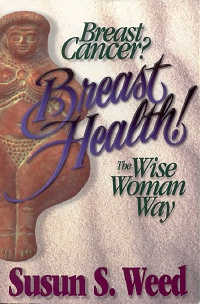
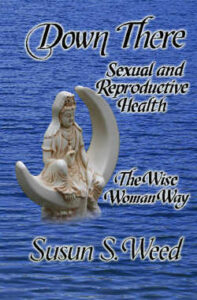
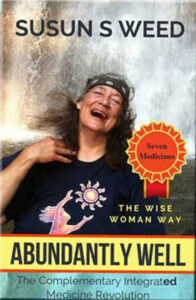



0 Comments